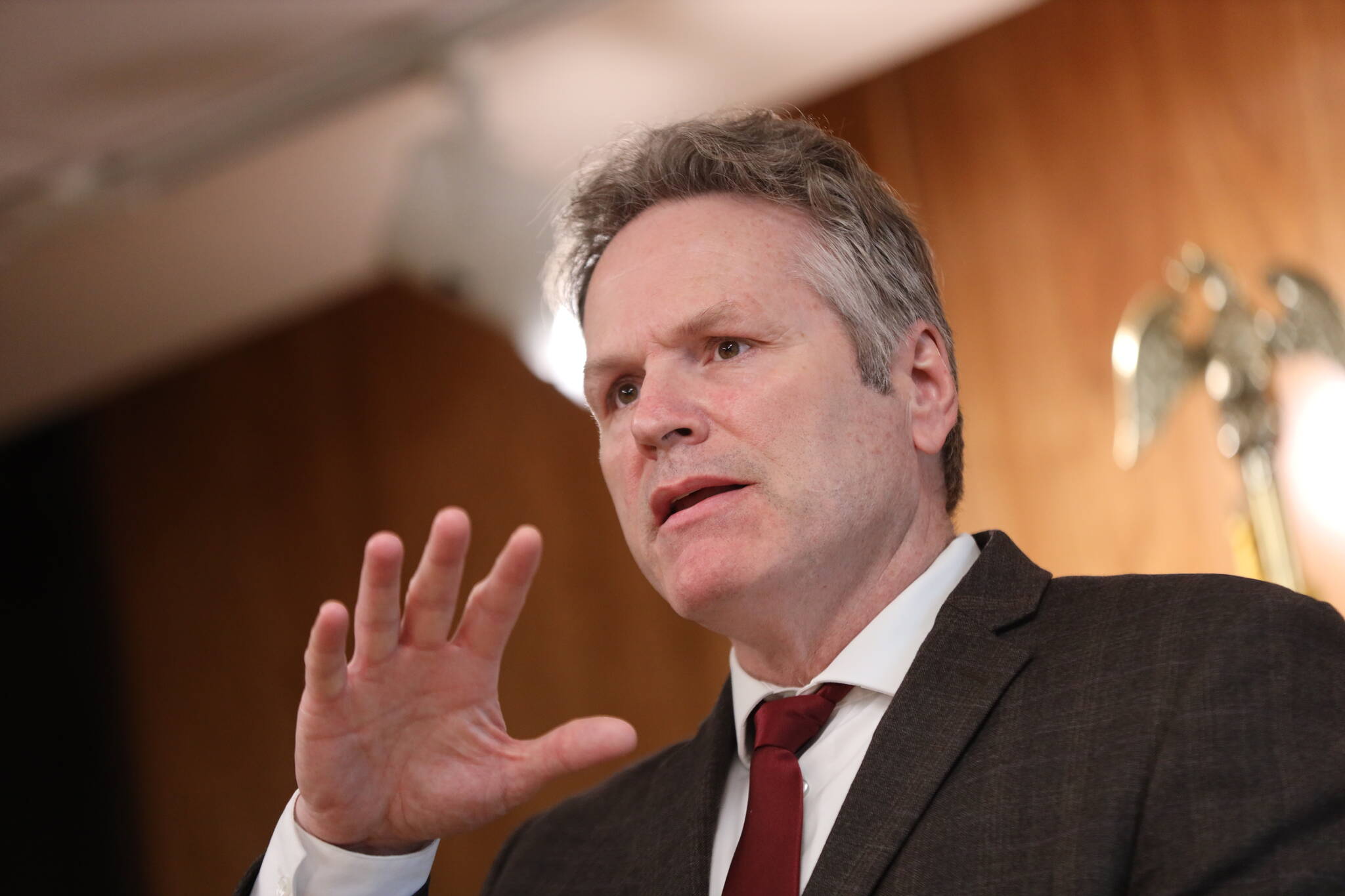Alaska is 30 years into state budget deficits, borrowing billions from savings to pay the bills.
Gov. Mike Dunleavy is five years into the job, still pledging mega Permanent Fund dividends even if the money isn’t there.
Almost four months ago, Dunleavy in his State of the State address couldn’t even manage to acknowledge the need for a long-term fiscal plan, despite the budget math that added up otherwise.
Then the governor had an epiphany last month. Not a religious one, a fiscal one.
He said the word “taxes.”
Only he didn’t say it in public. That would have been a bridge much too far for Dunleavy, who has long maintained that taxes are bad and that he would never support any such thing without a vote of the people.
He said the T word during closed-door meetings with legislators, with no mention of putting the question on a statewide ballot, as if he were embarrassed to tell the public the truth about state finances. Or maybe he was sticking his toe into the political waters before sticking out his neck to take questions at a public microphone.
The governor told lawmakers he would introduce legislation for a state sales tax, though he provided no details on how to meld a state tax on top of local sales taxes in 100-plus cities and boroughs.
Then at a news conference two weeks ago, the governor publicly acknowledged his administration was working on sales tax legislation.
Yet still no sight of an actual bill as of Friday, more than three weeks after he told legislators it was on its way.
Members of the House and Senate are struggling for the umpteenth consecutive year to find consensus for an overall fiscal plan to balance state revenues with spending. Even before the governor woke up to the need for taxes, legislators already had put multiple sales tax and income tax proposals on the table, though none appear headed to passage this year.
Even if Dunleavy is serious about seeing the need for taxes to help pay for public services and the beloved dividend, he waited too long to change the batteries in his political calculator. The governor awoke with just a few weeks left before the Legislature’s adjournment deadline of May 17. That’s more than tardy, it’s unrealistic and shows a reluctance to lead.
Meanwhile, it’s unconscionable that he continues to support paying out a PFD this fall that would exceed available funds. It’s as if one hand says the state needs money to pay its bills while the other hand says here, take the check.
This is the same governor who last year vetoed a tax of pennies per puff on e-cigarette and vape products, saying “a tax increase on the people of Alaska is not something I can support.” It’s quite the change from opposing a whisp of a tax on vape sticks to supporting a sales tax on everything that moves off the shelf.
Conflicting positions are not limited to the governor. So-called fiscal conservatives in the House this year support a $2,700 PFD so strongly that they are willing to run up a $600 million budget deficit.
Admittedly, it’s good that more legislators, and the governor, are willing to at least talk about taxes, even if a sales tax is not a good answer — it does little to raise revenue from the thousands of nonresident workers who come to the state.
It’s just too bad so many of the state’s elected leaders can’t admit that an oversized PFD is part of the problem.
• Larry Persily is a longtime Alaska journalist, with breaks for federal, state and municipal service in oil and gas, taxes and fiscal policy work. Columns, My Turns and Letters to the Editor represent the view of the author, not the view of the Juneau Empire. Have something to say? Here’s how to submit a My Turn or letter.

